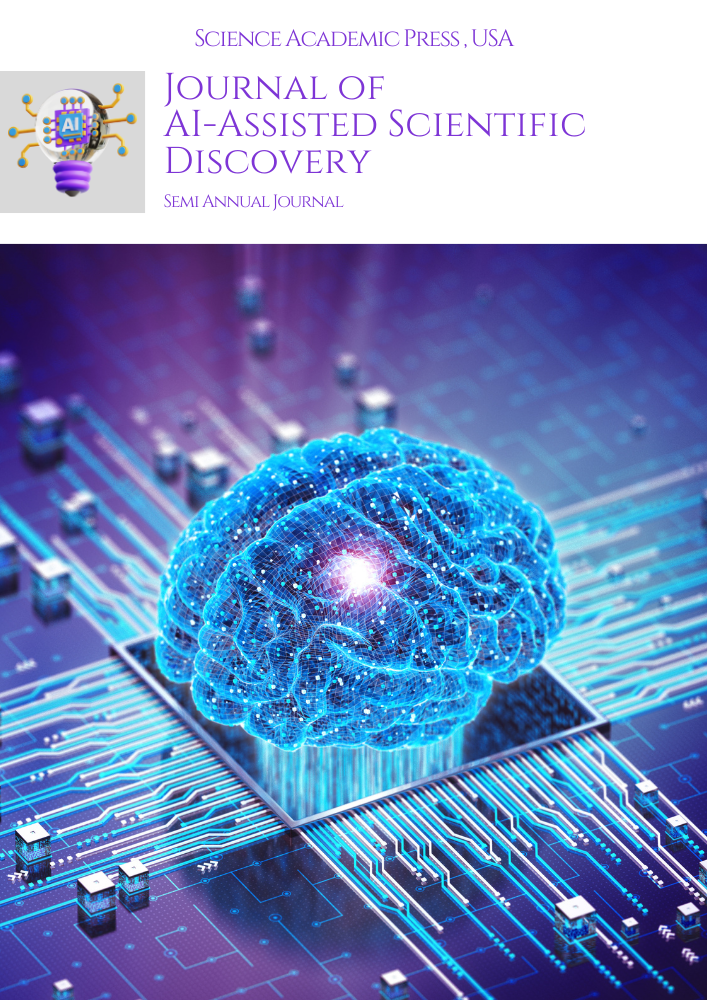Published 19-03-2021
Keywords
- Multi-agent systems,
- Automated negotiation,
- Intelligent systems

This work is licensed under a Creative Commons Attribution-NonCommercial-ShareAlike 4.0 International License.
Abstract
With the historic rise in cloud computing, mega-enterprises are now more and more shifting their on-premises IT infrastructures to cloud environments. Even though such migration is being adopted more and more, there still remains a paucity of research focused on autonomous resource negotiation between cloud consumers and providers. The current paper introduces a complete designed framework for multi-party, multi-issue negotiation in cloud resource provision. It offers a sophisticated cloud marketplace in which resources are dynamically purchased and sold. It employs belief–desire–intention (BDI) model-based consumer and provider agents, which negotiate simultaneously on multiple axes. The negotiations employ a hybrid approach that integrates time-aware and resource-aware dynamic deadline methods for computing offers and counteroffers. In addition, the marketplace proposed herein also includes a behavior norm score mechanism and Reputation Index to build agents' mutual trust.
Downloads
References
- Jennings, N., Faratin, P., Lomuscio, A., Parsons, S., Wooldridge, M., & Sierra, C. (2001). Automated negotiation: Prospects, methods, and challenges. Group Decision and Negotiation, 10, 199–215.
- Deochake, S., Sarode, S., Kanth, S., Potdar, V., Chakraborty, S., & Mukhopadhyay, D. (2012). HENRI: High-efficiency negotiation-based robust interface for multi-party multi-issue negotiation over the internet. Proceedings of the CUBE International IT Conference, 647–652. https://doi.org/10.1145/2381716.2381840
- Bratman, M. (1987). Intention, Plans, and Practical Reason (Vol. 10). Harvard University Press, Cambridge, MA.
- Georgeff, M., Pell, B., Pollack, M., Tambe, M., & Wooldridge, M. (1999). The belief-desire-intention model of agency. Intelligent Agents V: Agent Theories, Architectures, and Languages, 1–10.
- D’Inverno, M., Luck, M., Georgeff, M., Kinny, D., & Wooldridge, M. (2004). The dMARS architecture: A specification of the distributed multi-agent reasoning system. Autonomous Agents and Multi-Agent Systems, 9, 5–53.
- Barbieri, M., & Mascardi, V. (2011). Hive-BDI: Extending Jason with shared beliefs and stigmergy. Proceedings of ICAART 2011 - The 3rd International Conference on Agents and Artificial Intelligence, Vol. 2, 479–482.
- Rao, M.S.S., & An, J. (2013). BDI: Applications and architectures. International Journal of Engineering Research and Technology (IJERT), 2.
- Buyya, R., Yeo, C., Venugopal, S., Broberg, J., & Brandic, I. (2009). Cloud computing and emerging IT platforms: Vision, hype, and reality for delivering computing as the 5th utility. Future Generation Computer Systems, 25, 599–616.
- Stantchev, V., & Schröpfer, C. (2009). Negotiating and enforcing QoS and SLAs in grid and cloud computing. Advances in Grid and Pervasive Computing, 25–35.
- Venticinque, S., Aversa, R., Di Martino, B., Rak, M., & Petcu, D. (2011). A cloud agency for SLA negotiation and management. Euro-Par 2010 Parallel Processing Workshops, 587–594.
- Shojaiemehr, B., Rahmani, A., & Qader, N. (2019). A three-phase process for SLA negotiation of composite cloud services. Computer Standards & Interfaces, 64, 85–95.
- Mukhopadhyay, D., Deochake, S., Kanth, S., Chakraborty, S., & Sarode, S. (2012). MAINWAVE: Multi-agents and issues negotiation for the web using an alliance virtual engine. Smart Computing Review, 2, 308–317. ISSN: 2234-4624.
- Vij, S., Patrikar, M., Mukhopadhyay, D., & Agrawal, A. (2015). A smart and automated negotiation system based on linear programming in a multilateral environment. Smart Computing Review, 5, 540–552. ISSN: 2234-4624.
- Awasthi, S., Vij, S., Mukhopadhyay, D., & Agrawal, A. (2016). Multi-strategy based automated negotiation: BGP-based architecture. 2016 International Conference on Computing, Communication, and Automation (ICCCA).
- Cao, M. (2016). Dynamic time-dependent strategy model for predicting human offers in e-commerce negotiation. Open Journal of Social Sciences, 4, 64–69.
- Ravoor, S., & Wong, J. (1997). Multithreaded transaction processing in distributed systems. Journal of Systems and Software, 38, 107–117.
- Cardoso, H., Schaefer, M., & Oliveira, E. (1999). A multi-agent system for electronic commerce including adaptive strategic behaviors. Progress in Artificial Intelligence, 252–266.
- Faratin, P., Sierra, C., & Jennings, N. (1998). Negotiation decision functions for autonomous agents. Robotics and Autonomous Systems, 24, 159–182.
- Gonzaga, T., Bentes, C., Farias, R., de Castro, M., & Garcia, A. (2007). Using distributed shared memory mechanisms for agent communication in a distributed system. Seventh International Conference on Intelligent Systems Design and Applications (ISDA 2007).
- Minsky, N. (2005). Law-governed multi-agent systems. ACM SIGSOFT Software Engineering Notes, 30, 1–1.


